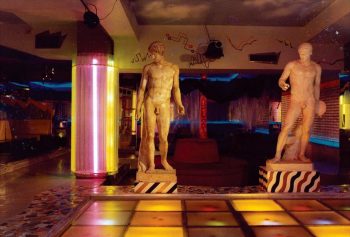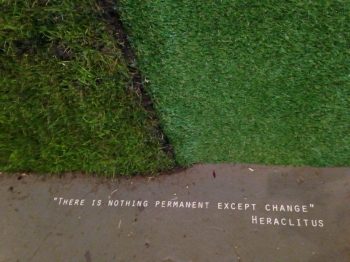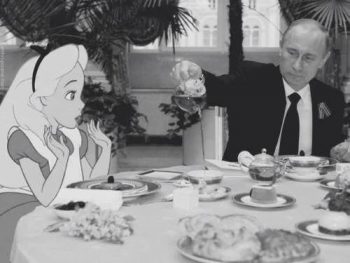[SYMPOSIUM] BOOK CLUB
#18 Virno: The Dismeasure of Art
Friday, 9 June 2017, 18:00 – 20:00
Tropics Café, Grow Elephant, New Kent Road, London SE17 1SL
Rail/tube: Elephant & Castle, Bus: 53, 63, 133, 155, 168, 171, 172, 196, 333, 363, 415, 453
Free, please book your place
In June we’re reading The Dismeasure of Art, an interview with Paolo Virno, originally published in 2009. This discussion will be chaired by Rubén Salgado Perez and will take place at Tropics Café, Grow Elephant in Elephant & Castle.
DOWNLOAD Sonja Lavaert & Pascal Gielen (2011/2009). The Dismeasure of Art: An interview with Paolo Virno. In Community Art: The Politics of Trespassing. Amsterdam: Valiz, 2011 . Originally published in Open! #17 A Precarious Existence, 1 Nov 2009. SKOR Foundation Art and Public Space, Amsterdam.




Paolo Virno, in The Dismeasure of Art (2009), an interview with Sonja Lavaert and Pascal Gielen, addresses the concept of ‘common’ from the perspective of what he calls ‘the crisis of the unit of measure’. Virno thinks that the experience of avant-garde art is “one of disproportion and of ‘excess’, of lack of moderation”. Avant-garde art is for him a clear example of this disproportion rooted in the mass-production dynamic of Post-Fordism. With the avant-garde, art forms are showing new ways of feeling and living. The exploration of new forms in the avant-garde is like exploring a new public sphere with new standards to understand society.
Virno suggests that the common ground of society and art is about exploring new structures, new rules where the political and the aesthetic meet. He thinks that ‘general’ (or ‘common’) is a concept frequently confused with ‘universal’ in the fields of art and philosophy. It would be very interesting to find out whether the common ground between art and politics could be understood here as a matter purely about form or whether it is also about content.
Virno explains on the one hand, how avant-garde art forms escape any proportional measure in the same way that the mass-production of goods in neo-capitalism does. They both have their own ungraspable grammar. On the other hand, the ‘common’ is not only something that occurs “in between” two individuals but it is previous to the individual (as well). He asserts that the individual is a result of a movement that comes from the general under the jurisdiction of an ‘individuation principle’. The model for the ‘common’ that Paolo Virno uses is ‘language’, “which only exists within a community and that cannot exist apart from the community” (Virno, 2009:3). When language is the main tool for organizing, everything becomes aesthetic. The boundaries between aesthetics and policy are blurred because both are related with two forms of organization: the institutional and the police order.
This dismeasure is what Virno tries to explain when asserting that reality is aesthetic and everything is a matter of defining concepts. When language is dismeasure, what happens with communication? In a way, neo-capitalism, as any other form of domination in history, crystallises our possibility for autonomy. When a wrong is visible, it is because hierarchical structures cannot assume the task of addressing equality.
My question for this symposium is twofold:
- How can an arts organization articulate its institutional structure in order to fertilize the soil of a ‘becoming’ equal community?
- How can the public be addressed if this has been rooted in a ‘real’ common space?
Suggested further reading
Bataille, G. (1991) The Accursed Share, Volume 1: Consumption. New York; Zone Books.
Bataille, G. (2004) The Unfinished System of Nonknowledge. Minneapolis; University of Minnesota Press.
Badiou, A. (2005) Metapolitics. London; Verso.
Benjamin, W. (2008) The Work of Art in the Age of Mechanical Reproduction. London; Penguin.
Bennett, T. (2013) Making Culture, Changing Society. London; Routledge.
Boltanski, L. and E. Chiapello (2005) The New Spirit of Capitalism. London; Verso.
Bourdieu, P. (1997) Language & Symbolic Power. Cambridge; Polity.
Choi et al. (Eds.) (2014) Cluster: Dialectionary. London; Sternberg Press.
Foucault, M. (1972) The Archaeology of Knowledge. London; Tavistock Publications.
Fraser, A. (2006) A museum is not a business, it is run in a businesslike fashion. In Möntmann, N. (Ed.), Art and Its Institutions: Current Conflicts, Critique and Collaborations. London; Black Dog Publishing.
Laclau, E. & Mouffe, C. (2001) Hegemony and Socialist Strategy: Towards a Radical Democratic Politics. London; Verso.
Latour, B. (1999) ‘Give me a laboratory and I will rise the world’. In Mario Biagioli (ed.) The Science Studies Reader. New York & London; Routledge.
Lemke, T. (2001). ‘The birth of bio-politics: Michael Foucault’s lectures at the College de France on neo-liberal governmentality’ v.30 in Economy and Society.
Negri, A. Gielen, P. and Lavaert, S. (2009) Art and Common: A conversation with Antonio Negri. In De Bruyne, P. and Gielen, P. (Eds.), Community Art: The Politics of Trespassing. Amsterdam; Valiz.
Rancière, J. (1999) Disagrement: Politics and Philosophy, Minneapolis, MN and London: University of Minessota Press.
Rancière, J. (2004a) The Politics of Aesthetics: the distribution of the sensible. London; Continuum.
Rancière, J. (2004b) Is there a Deleuzian aesthetics?, [Online]
Sheikh, S. (2006) The Trouble with Institutions, or, Art and Its Publics. In Möntmann, N. (Eds.), Art and Its Institutions: Current Conflicts, Critique and Collaborations. London; Black Dog Publishing
Virno, P. (2004) A Grammar of the Multitude. Cambridge. MIT Press.